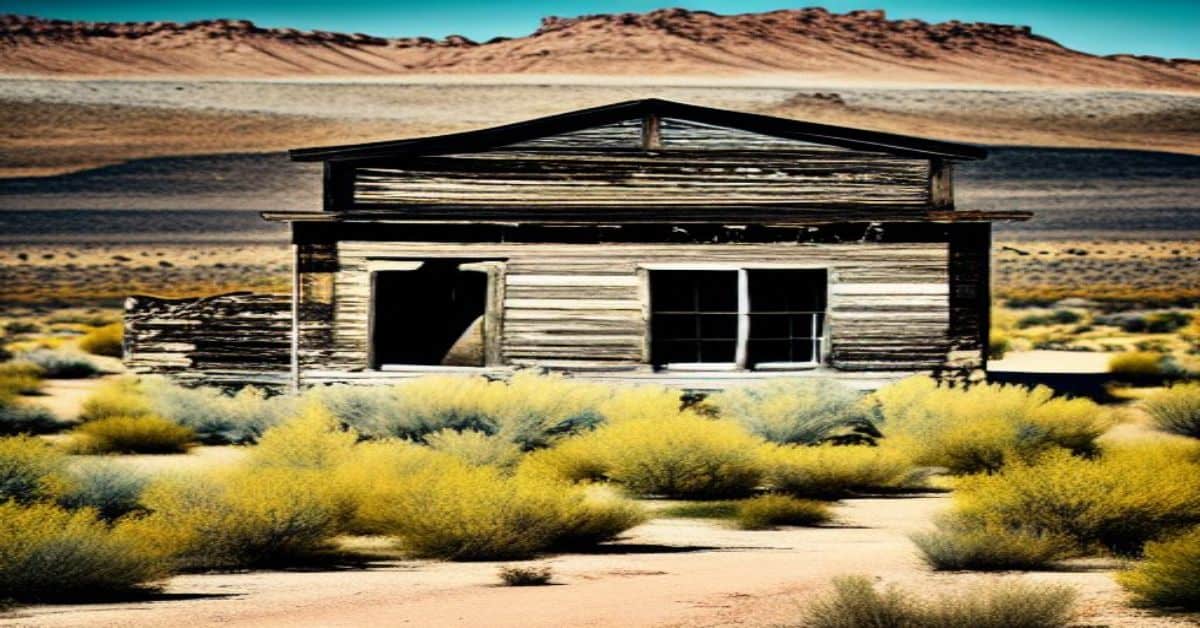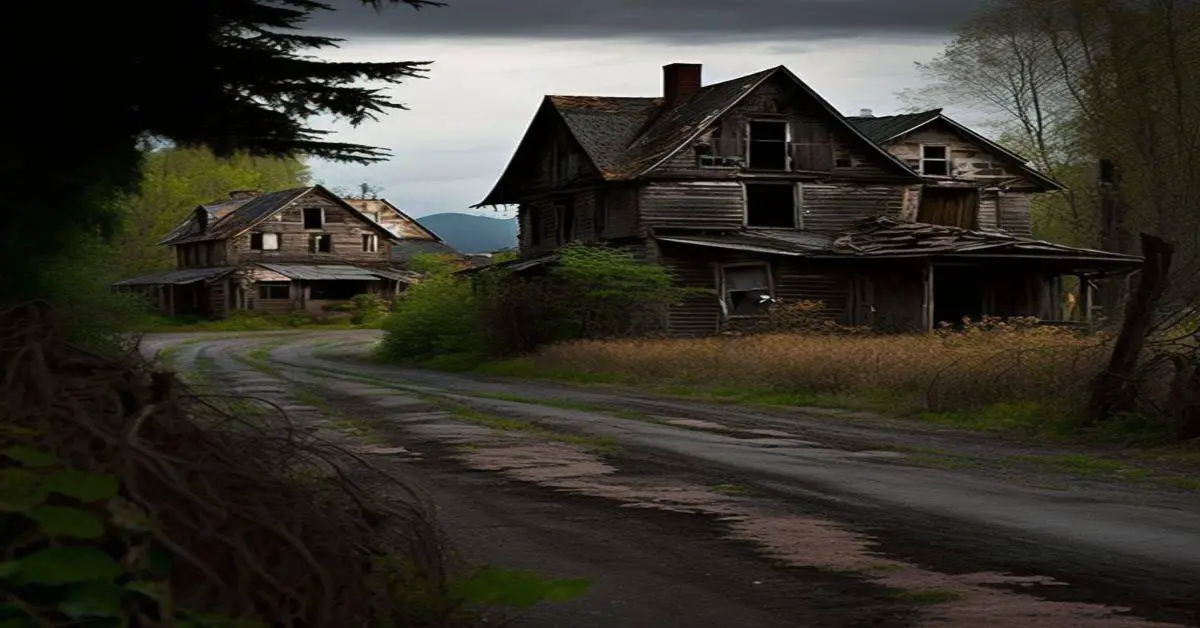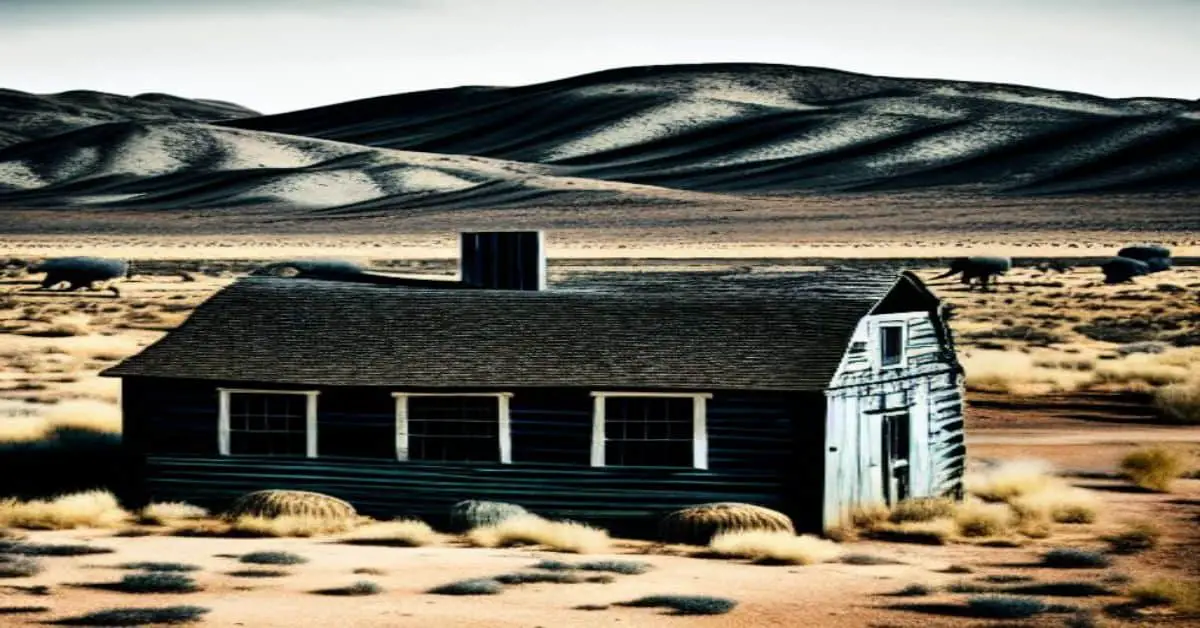Lion City, Montana, once a lively hub of mining activity, now stands abandoned and desolate, but still holds a powerful allure for those who seek out the forgotten and the mysterious.
This ghost town, located 12 miles west of Melrose, offers an eerie glimpse into a bygone era, where saloons, brothels, and businesses once thrived. Only 15 structures remain today, serving as a haunting reminder of Montana’s mining past.
But despite its remote location and lack of modern amenities, Lion City continues to draw visitors who are drawn to the thrill of exploring its abandoned streets. Accessible only by a primitive road, this ghost town provides a unique opportunity to experience the rugged beauty of Montana’s wilderness while immersing oneself in the area’s rich history.
In this article, we will delve into the fascinating history of Lion City, explore its remaining structures and businesses, and provide practical information for those who wish to visit this hauntingly beautiful site.
Key Takeaways
- Lion City was a ghost town 12 miles west of Melrose, Montana, and the second community founded in the Bryant Mining District.
- The town was originally called Trapper City, but the residents moved their homes and businesses closer to the mining activity as Lion Mountain was rich in ores.
- The mines owned by the Hecla Consolidated Mining Company began to close in the early 1900s, and the residents slowly trickled out of the area as the mines closed. Lion City is now completely abandoned.
- About 15 structures remain in the Lion City area, including grocers, dry goods, saloons, blacksmith shops, stage operators, and brothels. Access to the site is primitive and accessible with a 4WD or ATV.
Location and History
Unveiling the whereabouts and historical background of Lion City, a deserted town situated in the Bryant Mining District of Montana, reveals the gradual decline of the community due to the closure of the Hecla Consolidated Mining Company’s mines in the early 1900s.
Lion City had a significant cultural significance in the area as it was the second community founded in the mining district, and the residents moved their homes and businesses closer to the mining activity as Lion Mountain proved rich in ores.
The town had various businesses, including grocers, dry goods, saloons, blacksmith shops, stage operators, and brothels. However, as the mines closed, the residents slowly trickled out of the area.
Despite being abandoned, Lion City still has tourism potential due to its historical and cultural significance.
About 15 structures remain in the Lion City area, including a few resident buildings still standing and more houses in the trees.
The townsite of Glendale, which housed the smelting facilities for the mining district, is located on the way to Lion City.
Additionally, the Lion City/Hecla area is known for snowslides that destroy almost everything in their path, which adds to the area’s natural beauty.
Therefore, the abandoned Lion City can provide a unique experience for tourists interested in exploring the area’s history and natural phenomena.
Structures and Businesses
Several structures still standing in the area include grocers, dry goods shops, saloons, blacksmith shops, stage operators, and brothels, some of the businesses in Lion City. These structures provide a glimpse of the town’s architecture and design, reflecting the late 19th century style. Visitors exploring the area can see the remnants of the past, such as the wooden buildings and storefronts that were once bustling with activity.
Despite their age and state of disrepair, the structures speak to the town’s economic impact and the vital role it played in the surrounding mining district.
The businesses in Lion City were essential to the area’s economic growth. The town’s location adjacent to the Hecla Consolidated Mining Company’s mines made it convenient for miners to purchase their daily needs.
Grocers, dry goods, and blacksmith shops were necessary for everyday life, while saloons and brothels entertained the miners. The stage operators were also significant as they transported goods and people to and from Lion City.
Exploring the remnants of these businesses offers a glimpse into the town’s past and its role in the mining district’s economic development.
Access and Neighborhood
Access to Lion City is only possible through a very primitive road that requires a 4WD or ATV, making it a destination for adventurous visitors. Despite the rugged terrain, the journey to Lion City is worth it.
Along the way, visitors can explore the neighboring townsite of Glendale, which housed the smelting facilities for the mining district. This townsite provides a glimpse into the area’s mining history and adds to the overall experience of the trip.
It is important to note that the residents of Hecla, Lion City’s neighbor, often faced the danger of snowslides that could destroy almost everything in their path. This highlights the potential risks of visiting the area, especially during winter.
Visitors should be cautious and prepared for the rugged conditions and potential weather hazards. However, for those willing to take the necessary precautions, the trip to Lion City offers a unique opportunity to explore a once-thriving mining town and witness the remnants of its past.
Frequently Asked Questions
Are there any legends or ghost stories associated with Lion City?
There are no known legends or ghost stories associated with Lion City. Preservation efforts have been minimal, and its tourism potential is mainly for those interested in exploring abandoned mining towns.
How did the closure of the mines affect the surrounding communities?
The closure of the Hecla Consolidated Mining Company’s mines in the early 1900s caused a significant impact on the local economy and migration patterns. The once-thriving community of Lion City slowly dwindled as residents moved out in search of employment elsewhere.
Have any attempts been made to preserve or restore any of the remaining structures in Lion City?
Conservation efforts and tourism impact are potential discussion ideas regarding the remaining structures in Lion City. Balancing preservation with safety and natural habitats is important, while promoting Lion City as a tourist destination can have benefits and drawbacks.
What other ghost towns or abandoned sites are located near Lion City?
Exploring ruins near Lion City reveals several other ghost towns and abandoned sites with historical significance. The details of these sites and their connection to the mining district are yet to be explored.
Have any archaeological or historical studies been conducted on Lion City or the surrounding area?
Archaeological and historical studies have been conducted on Lion City and the surrounding area, exploring Lion City and tracing the history to unveil the secrets of its forgotten past. These studies have shed light on the town’s mining history and the daily lives of its residents.


